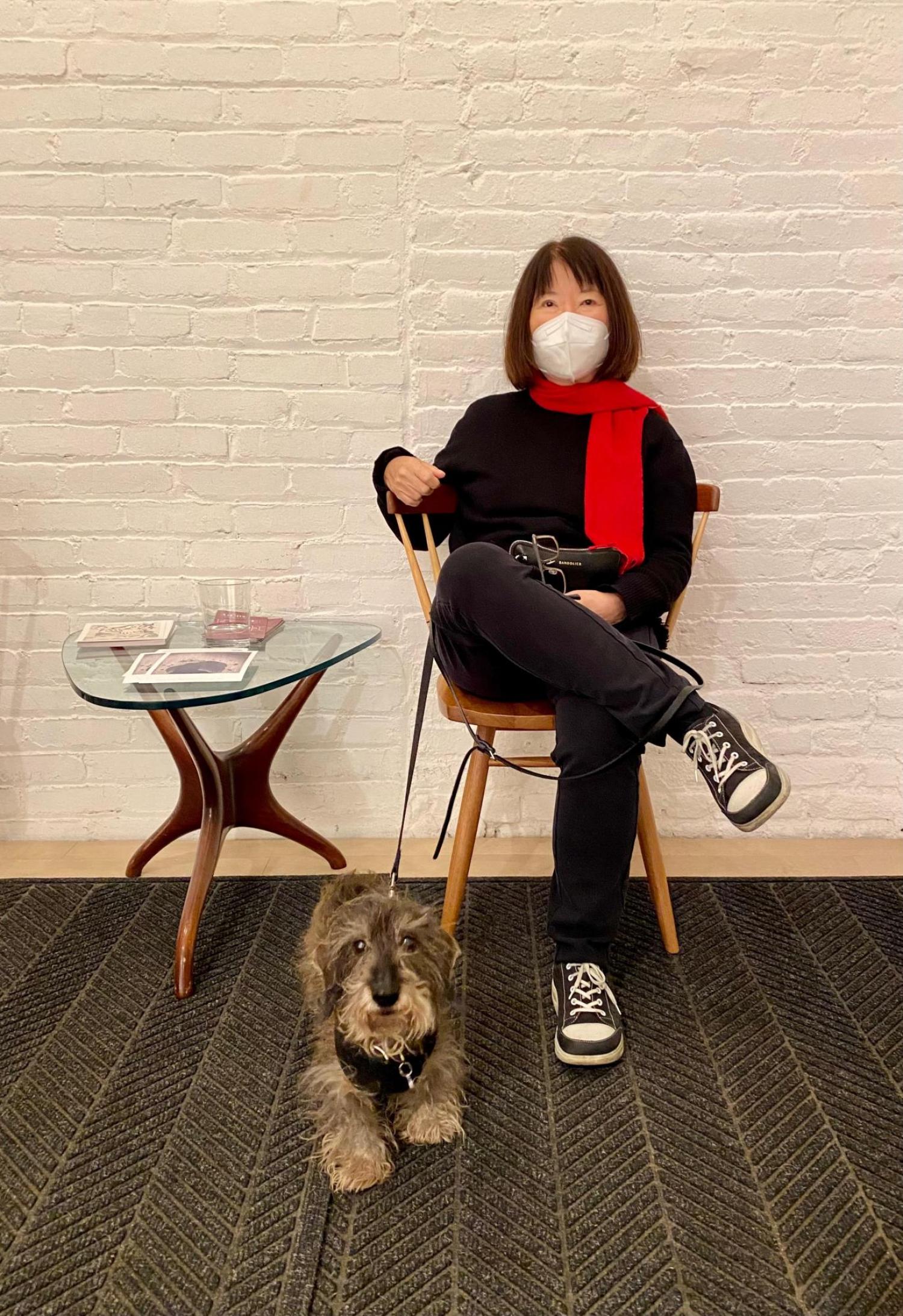
Barbara Takenaga's Got Art on the Brain

As a Guggenheim memorial fellow and professor emerita of Williams College, Barbara Takenaga (Engl, Art’73; MFA’78) is acclaimed for her large-scale abstract paintings. Her art strikes a balance between abstraction and representation, which evokes a range of possibilities for viewers.
When you graduated with a degree in English, you stuck around Boulder to take classes in Art. What made you stay and why did you choose art?
I loved my time in Boulder. There was so much going on at the time – the energy of the counterculture, the protests of the Vietnam war, being away from home for the first time. As a graduating senior with an English major, I decided at the last moment that I wanted to study art as well. So I took only art classes for a year and a half to get my double major. I lived in a house on the Hill with a wonderful group of friends and we all stayed after graduation. I have zoomed with them every two weeks during the pandemic. I took an art course every semester, and at some point, someone said, “why don’t you go to graduate school? You’re always around here anyway!” So I did and loved it. I actually went to CU for 11 consecutive years!
Did your studies in English shape your artistic approach?
Yes, definitely. What I learned about the English Romantic movement and their “reconciliation of opposites” looms large, as did poetry courses. I always felt poetry has a great kinship with visual art – a kind of condensed or distilled form that opens outward, expanding in meaning. Metaphor and ambiguity.
What is your favorite memory from your time at CU?
Oh wow, that’s a hard question. It’s like asking what your favorite song is. When you’re older, there are just too many options. I loved meeting my good friends at Williams Village in the first year those dorms opened. I loved the aspen trees turning and buying books at Brillig Works. Art department Halloween parties where teachers arrived in outrageous costumes. The foreign films series at the UMC, endless parties and working late nights in the art department. Getting lost in the parking lot in a snowstorm after a Rolling Stones concert. And for some reason, I remember walking on campus with my dog Ari, right after a big snowfall. No one was around, no footprints anywhere. It was silent and beautiful.
How did your time as a 2020 Guggenheim memorial fellow allow you to grow in your art practices?
What a great surprise. I was totally thrilled and grateful, especially in a pandemic year when so many projects were cancelled or postponed. The fellowship has allowed me to keep painting in the studio in practical ways, but it has also provided recognition, which really fuels my ambition for the work. There is an apt quote from the artist Joyce Pensato: “As I get older and shorter, I’m thinking bigger.”
Much of your work focuses on abstract representations of natural phenomena, how do you find inspiration and ideas for subjects?
Lately, my paintings rely on the randomness of poured liquid paint. I never really know how the image will dry since the paint moves, pools, and drags unexpectedly. It’s a small version of those larger physical forces - gravity, inertia, viscosity, etc. I think that parallel invites the look of natural phenomena, as in the small information is carried in the larger, like a Mandelbrot fractal or micro/macro views. I am drawn to those kinds of images as an abstract process painter. I enjoy trying to rein in the chance, organic image with structure and control.
You’ve said that you hope for your art to evoke simultaneous feelings of recognition and unfamiliarity. What effect are you hoping this experience of feeling will have on viewers?
I’m interested in that place where one can hold those two seemingly opposing views at the same time, a kind of standing in the middle; that space between naming something and having it be non-verbal. Clearly, it’s a very old idea that comes up in many philosophies and religions. I like that idea of possibility. Is a shape an island or a submarine, stars or bullet holes, meteors or missiles? Are we looking at a cross section of a mineral or a galaxy? We like the familiar — certainty is reassuring and it helps to resist entropy and change. But the unfamiliar can be surprising (or threatening), opening up options and opportunity. I like to think of it as encouraging visual tolerance.
Has your time teaching art at multiple higher education institutions changed your own approach to creating art?
Yes, I’m sure it has. Most artists have two jobs, their “day job” and their studio work. Teaching art allowed me to think about art all the time. For example, I often saw exhibitions and books through the lens of the teacher – that my painters will enjoy this show, that I should take a phone jpg for a particular student, or that an image will fit well into a lecture on figuration. But it’s interesting — when I was teaching, I approached looking at art, and everything else, with much more articulation and critique. Now that I’m retired, it’s a lovely respite to just look and not think.
Photo Courtesy Barbara Takenaga

